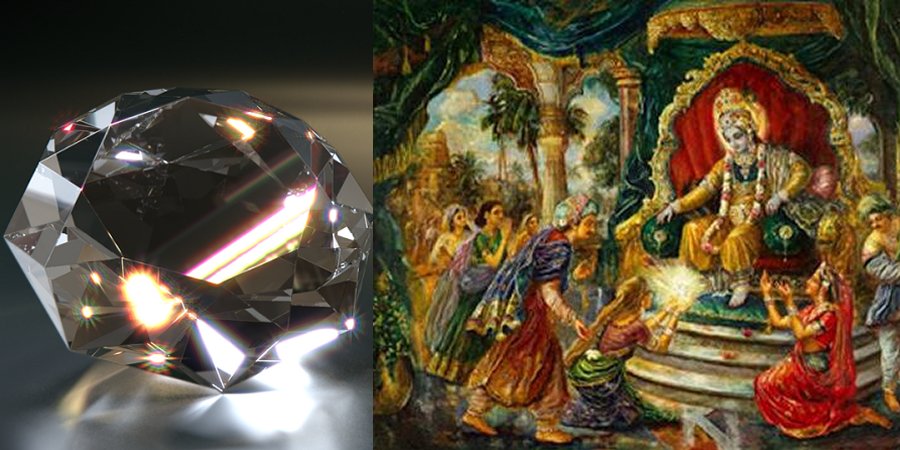Syamantaka – Divine Jewel With Magical Powers Was A Gift From The Sun God In Hindu Mythology
Ellen Lloyd - AncientPages.com - Whether it is a ring, necklace, cup, stone, or some other object, precious artifacts with supernatural abilities are often mentioned in myths and legends of our ancestors.
Syamantaka was a divine gem with magical abilities in Hindu mythology. Tradition has it that the land in possession of Syamantaka was protected from droughts, floods, earthquakes, and famines.
Left: Diamond. Credit: Public Domain - Right: Lord Krishna receives the Syamantaka. Credit: Jagannath Puri Hare Krishna Movement
This precious jewel could provide gold daily.
Syamantaka, The Most Famous Jewel In Hindu Mythology
Syamantaka, the most famous jewel in Hindu mythology, originally belonged to the Sun god, who wore it around his neck.
As the legend goes, Satrajit, a nobleman from Dwarka who was a great devotee of Surya, the Sun God, decided he would perform a rigorous penance to appease the Sun God. He left all his possessions and went to live in the forest, where he stayed for many years.
As Ahalya Gautam writes in the book Popular Upanishads Tales For All, one day, "the Sun god appeared before him and made him visit his abode. Finally, the happy Lord gave Satrajit his much renowned and fabled Syamantaka Mani (the gem). Satrajit wore that gem around his neck and returned to Dwarka. Owing to his wearing that gem, his whole personality dazzled like the sun."
An exciting part of the story concerns what the Sun God looked like after removing the jewel from his neck. According to the legend, the Sun God was shining so brightly that Satrajit couldn't see him. He asked the deity to appear in a less fiery shape. When the Sun God removed the Syamantaka jewel off his neck, Satrajit could see that his worship deity was not very tall. The Sun God had dwarfish stature, with a body like burnished copper, and his eyes very slightly reddish eyes.
With the precious jewel hanging around his neck, Satrajit returned to his palace. Now he was also shining brightly, and the guards mistook him for the Sun God.
They quickly notified Lord Krishna that the Sun God had taken his place in Dwarka. When Lord Krishna learned about this, he smiled and said: "He is not the Sun god but only our brethren Satrajit. His body is appearing so sparkling because he is wearing the fabled gem Syamantaka. The gem creates this impression around the wearer's personality."
Lord Krishna Accused Of Murder And Theft
Satrajit placed the precious jewel in his palace on a unique altar; each day, the stone produced plenty of gold.
Satrajit and Prasena with the Symantaka Mani, an Illustration to the Bhagavata Purana Credit: Public Domain
One day Lord Krishna told Satrajit that he should give the magical stone to the King of the Yadus, Ugrasena, but Satrajit refused. The magnificent Syamantaka turned Dwarka into a prosperous and peaceful kingdom free from diseases and distress.
Not long after this, Satrajit's brother Prasena went hunting, and he had the Syamantaka hanging on a chain around his neck. Prasena was killed by a lion that took the jewel to a cave in the mountains. The cave inhabitants were Jambavan, the King of the bears, and one of the Chiranjeevi, the seven immortals in Hinduism who are to remain alive on Earth until the end of the current Kali Yuga.
Rumors spread, and it was believed that Lord Krishna had stolen the precious Syamantaka. Satrajit was worried that his brother had not returned, and he suspected Lord Krishna had murdered Prasena.
"Not only had Krishna also expressed the desire of possessing that gem. The recollection of that desire of Krishna convinced Satrajit that Krishna had murdered Prasena to possess that gem. When this rumor spread far and wide in Dwarika (Dwarka), people started looking at Krishna with a suspicious eye," Ahalya Gautam writes.
Lord Krishna was innocent, and the only way to prove this was to find the magical gem. He went to the forest, followed the trail of the deceased Prasena, found the man's body, and finally located the mountain cave where he saw the dead body of the lion. Lord Krishna noticed tracks of a bear inside the cave and followed them. Then, he saw how Jambavan's children were playing with the valuable jewel. Lord Krishna engaged in a furious battle with Jambavan, the King of the bears.
When Lord Krishna did not return to Dwarka, his father Vasudeva was sorrowful, but the divine seer Narada offered comforting words to all people of Dwarka.
"You should not weep as Krishna cannot be slain. However, to ensure his safety and welfare, they should also hymn the praises of Mother Ambika, who would surely bring him back safely," Narada said.
The battle between Lord Krishna and Jambavan lasted 28 days until the King of the bears finally grew tired. Lord Krishna took the precious gem, returned it to Dwarka, and gave the stone to Satrajit, who accepted the jewel, but with great shame and remorse.
Satrajit felt bad. He had accused Lord Krishna of murder and theft. So, he decided to offer Lord Krishna not only the jewel but also his three daughters, Satyabhama, Vratini, and Prasvapini.
Lord Krishna accepted the hand of Satrajit's daughter, Satyabhama, but he had no interest in the jewel.
Not long after this, Lord Krishna left Dwarka and thieves used this opportunity to steal the precious gem. They broke into Satrajit's palace, killed him, and stole the Syamantaka. When Lord Krishna learned about this crime, he was furious. He traveled back to Dwaraka to avenge Satrajit's death.
Lord Krishna chased down Kritavarma, Akrura, and Satadhanwa, who were the thieves. Akrura, chief of the Yadavas, an ancient people of India, managed to escape with the jewel to Kashi.
Lord Krishna summoned Akrura and asked him to admit his guilt. When Akrura complied, Krishna let him keep Syamantaka on the condition that it would remain in the city of Dwaraka.
Was Syamantaka A Real Jewel?
Since the fate of Syamantaka is unknown, many have speculated whether the precious stone was more than just a mythological jewel. Dwarka was long considered a mythical place, but this changed when underwater archaeologists discovered the ancient ruins of Krishna's kingdom on the coast of Gujarat, just near the Pakistan border.
Could the Syamantaka still lie at the bottom of the ocean?
Some have suggested Syamantaka was the famous Koh-i-Noor diamond, known to have been owned by the Mughal emperors of India and, at present, is one of the Crown Jewels of England.
"It was only really in the early nineteenth century, when the Koh-i-Noor reached Punjab and the hands of Ranjit Singh, that the diamond began to achieve its pre-eminent fame and celebrity – so much so that by the end of Ranjit's reign, pious Hindus were beginning to wonder if the Koh-i-Noor was the legendary Syamantaka gem mentioned in the Bhagavad Purana's tales of Krishna," Anita Anand and William Dalrymple wrote in the book Koh-I-Noor: The History of the World's Most Infamous Diamond.
Whether Syamantaka was just a magnificent mythological artifact or a natural, precious jewel is still debated.
Written by Ellen Lloyd – AncientPages.com
Copyright © AncientPages.com All rights reserved. This material may not be published, broadcast, rewritten or redistributed in whole or part without the express written permission of AncientPages.com
Expand for referencesMore From Ancient Pages
-
 Battle Between The Good And Bad Mind Over Human Souls – Told By The Iroquois Tribes
Featured Stories | Oct 25, 2021
Battle Between The Good And Bad Mind Over Human Souls – Told By The Iroquois Tribes
Featured Stories | Oct 25, 2021 -
 Scientists Say Dinosaurs Could Be The Reason Humans Can’t Live For 200 Years
Featured Stories | Jan 8, 2024
Scientists Say Dinosaurs Could Be The Reason Humans Can’t Live For 200 Years
Featured Stories | Jan 8, 2024 -
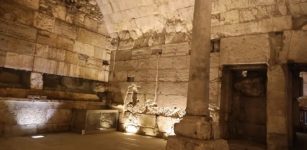 Never-Before-Seen Magnificent 2,000-Year-Old Second Temple Found By Western Wall In Jerusalem Revealed To The Public
Archaeology | Jul 29, 2021
Never-Before-Seen Magnificent 2,000-Year-Old Second Temple Found By Western Wall In Jerusalem Revealed To The Public
Archaeology | Jul 29, 2021 -
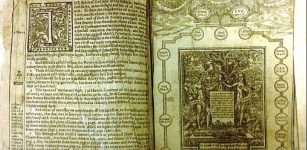 On This Day In History: The King James Bible Is Published For The First Time In London – On May 2, 1611
News | May 2, 2016
On This Day In History: The King James Bible Is Published For The First Time In London – On May 2, 1611
News | May 2, 2016 -
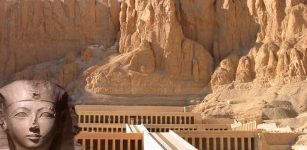 Pharaoh Hatshepsut: Skillful And Efficient Female Ruler Who Brought Prosperity To Ancient Egypt
Featured Stories | Mar 22, 2017
Pharaoh Hatshepsut: Skillful And Efficient Female Ruler Who Brought Prosperity To Ancient Egypt
Featured Stories | Mar 22, 2017 -
 Boreas – Mighty North Wind God In Greek Mythology
Featured Stories | Mar 26, 2023
Boreas – Mighty North Wind God In Greek Mythology
Featured Stories | Mar 26, 2023 -
 On This Day In History: Germany Invades Poland – On Sep 1, 1939
News | Sep 1, 2016
On This Day In History: Germany Invades Poland – On Sep 1, 1939
News | Sep 1, 2016 -
 All 5 Genetic ‘Letters’ Of DNA May Have Been Brought By Meteorites To Ancient Earth
DNA | May 21, 2022
All 5 Genetic ‘Letters’ Of DNA May Have Been Brought By Meteorites To Ancient Earth
DNA | May 21, 2022 -
 Coral Castle Is Among Most Fascinating And Mysterious Buildings In Florida
Featured Stories | Sep 17, 2018
Coral Castle Is Among Most Fascinating And Mysterious Buildings In Florida
Featured Stories | Sep 17, 2018 -
 Strange Ancient And Medieval Encounters With Unusual Beings Reported And Documented
Featured Stories | Jan 15, 2024
Strange Ancient And Medieval Encounters With Unusual Beings Reported And Documented
Featured Stories | Jan 15, 2024 -
 Rosicrucian Secret That Was Never Meant To Be Revealed
Featured Stories | Apr 18, 2018
Rosicrucian Secret That Was Never Meant To Be Revealed
Featured Stories | Apr 18, 2018 -
 On This Day In History: 150 Highly-Trained Swiss Guards Entered Vatican For The First Time – On Jan 22, 1506
News | Jan 22, 2017
On This Day In History: 150 Highly-Trained Swiss Guards Entered Vatican For The First Time – On Jan 22, 1506
News | Jan 22, 2017 -
 Groundbreaking Discovery Reveals High Cognitive Abilities In Humans Who Lived 170,000 Years Ago
Archaeology | Feb 7, 2022
Groundbreaking Discovery Reveals High Cognitive Abilities In Humans Who Lived 170,000 Years Ago
Archaeology | Feb 7, 2022 -
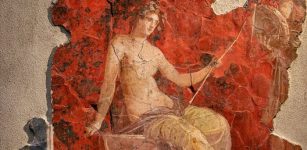 Never-Before-Seen Frescoes From Hadrian’s Time Unveiled At Ancient Roman Baths
Archaeology | Jun 27, 2022
Never-Before-Seen Frescoes From Hadrian’s Time Unveiled At Ancient Roman Baths
Archaeology | Jun 27, 2022 -
 Lady Midday – ‘Poludnica’- An Evil, Elusive Female Field-Spirit In Slavic Beliefs That Comes To Kill At Noon
Featured Stories | Jan 7, 2019
Lady Midday – ‘Poludnica’- An Evil, Elusive Female Field-Spirit In Slavic Beliefs That Comes To Kill At Noon
Featured Stories | Jan 7, 2019 -
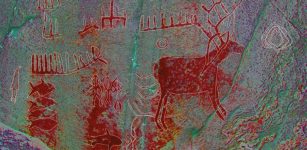 Tumlehed Rock Art And Seafaring In Stone Age’s Sweden
Archaeology | Nov 11, 2019
Tumlehed Rock Art And Seafaring In Stone Age’s Sweden
Archaeology | Nov 11, 2019 -
 On This Day In History: Terrorist Attacks On World Trade Center And Pentagon – On Sep 11, 2001
News | Sep 11, 2016
On This Day In History: Terrorist Attacks On World Trade Center And Pentagon – On Sep 11, 2001
News | Sep 11, 2016 -
 Piecing Together Scotland’s Religious Past With Shards Of Glass
Archaeology | Feb 28, 2023
Piecing Together Scotland’s Religious Past With Shards Of Glass
Archaeology | Feb 28, 2023 -
 Last Homo Erectus Lived 117,000 Years Ago At Ngandong
Archaeology | Dec 19, 2019
Last Homo Erectus Lived 117,000 Years Ago At Ngandong
Archaeology | Dec 19, 2019 -
 Archaeologists uncover new Yup’ik artifacts near Quinhagak, Southwest Alaska
Artifacts | Aug 28, 2015
Archaeologists uncover new Yup’ik artifacts near Quinhagak, Southwest Alaska
Artifacts | Aug 28, 2015

